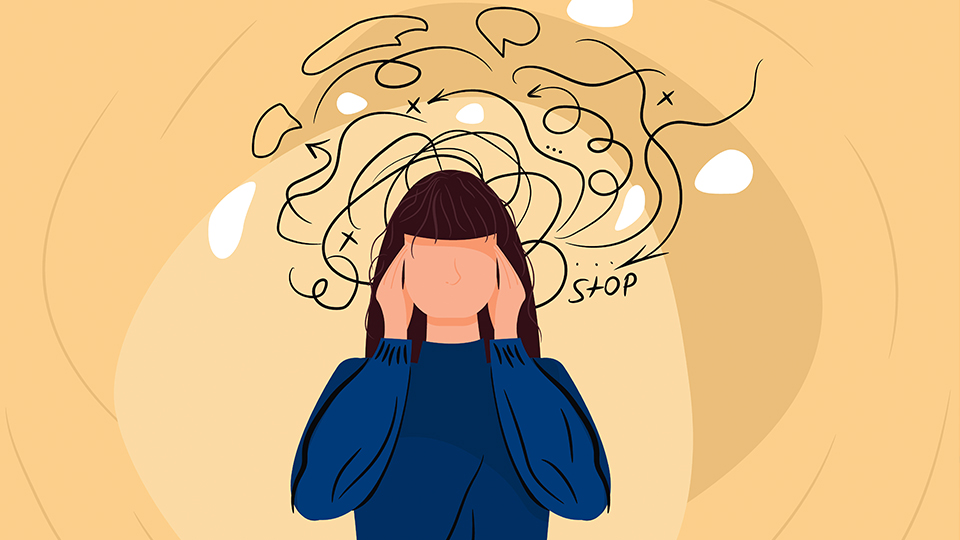Unblocking Creativity: Insights from a Product Designer and Design Manager
November 29, 2023Read Article

I have been part of building 100+ Mobile and web products over the past 14 years of my professional journey. I remember an experience where I was part of the team that built the Food Ordering platform for one of our clients. In order to empathize with my target users, I as a designer have to understand how the user feels when he tries to order food, especially when he is hungry.
Whenever a designer is building a product for the users, it's very important for them to have the mindset of creating something that will fulfil the users needs and solve the user problem. This can be done in a creative as well as in self expressive way. In order to address the needs and wants of a user, EMPATHY is very important.
Irrespective of the products, digital or otherwise, we should be aware that the users will be using our services in the actual environment. So we need to understand and start empathizing with these situations which are different from ours and build the product with these situations in mind.
 In the UX Design field, we often hear the phrase "You are not the user". This tells us that we as designers can't make any assumptions on our target users. To really understand our users, we should learn all the factors that influence the users when they see or interact with the products we are building for them.
In the UX Design field, we often hear the phrase "You are not the user". This tells us that we as designers can't make any assumptions on our target users. To really understand our users, we should learn all the factors that influence the users when they see or interact with the products we are building for them.
Human engagement usually starts from Pity, Sympathy, Empathy and then Compassion. All these have degrees of caring, engagement and the intention behind it. As we try to understand what empathy is, we should be clear on how it differs from the rest.
Empathy is often confused with Pity, Sympathy and Compassion, which are each reactions to the plight of others.
 Above chart shows effort for understanding and engagement
Above chart shows effort for understanding and engagement
Pity is the most detached and distant and often carries a sense that the suffering is acknowledged but is not considered.
 We feel pity when we see someone who is helpless.
We feel pity when we see someone who is helpless.
Sympathy has a different level of intent in which you feel bad to hear about the other's suffering and feel sorry but may not know what it's like to be in their shoes. It is associated with caring and a desire to see them better off or happier, but it doesn't enable us to create meaningful connections with others.
 We try to sympathize when someone is suffering
We try to sympathize when someone is suffering
Empathy goes a step further into engaging with and seeing or imagining things from the point of view of the other, experiencing the emotions, ideas, or opinions of that person or perhaps imagining a similar experience that has happened to you.
 Empathy helps in understanding and building relations
Empathy helps in understanding and building relations
Compassion is the most engaged as it is the final stage where you want to truly be with the suffering of another and relieve that suffering in some way. This is associated with an acknowledgment and experience of, caring about and active desire to ease the suffering of another.
 Be compassionate
Be compassionate
Empathy is the ability to imagine oneself in the situation of another, thereby experiencing the emotions, ideas, or opinions of that person. It allows us to make meaningful connections between yourself and another person. When talking about "Putting yourself in someone else's shoes", you're referring to EMPATHY.
So when building a product, empathizing our target users helps us to understand the problems they might be facing in relation to our product. Empathizing the user helps to respond appropriately to the user.
"In easier words:
Empathizing allows the designers to understand their users better by looking deeper into situations the users are facing that help them to think and create solutions for those problems."
The importance of empathy in the design is becoming more and more evident each day. It is considered as a skill and it can be developed.
To become more effective and understanding the users, empathizing skills needs to be developed. It can be developed by practice.
Below are few points that will help you to develop the skills required to have more empathy in UX design:
Researching abouts the competitions, users, market helps to gather insights about the product you would be building. This helps in understanding how your products fit and impacts the life of your customers. The UX Design field keeps evolving every time. Keep following some tech news to stay on top of news and trends in UX designs.
 Research
Research
Brainstorm first to find the right questions to ask the users in structured and natural flow. Then ask the users for their insights in an intimate setting where they can respond earnestly to open-ended questions. This will help in understanding what the users are looking for.
 Be curious
Be curious
We all know how to listen, but all are not good listeners. Listening to the users helps to achieve deep understanding. While listening try to understand what is being said and also focus on how it is being said.
 Start Listening
Start Listening
Observing our users use our product helps us understand what our users are experiencing when they are interacting with your product or service especially when users can't say which exact part of the user experience is failing them maybe because they might not know how to describe it! While communicating, carefully observe other people's body language, environments, and expressions (non-verbal) while the interaction is ongoing. Observing users in the field allows us to gather insights that cannot be captured through other research methods.
 Observing users body language, environments, and expressions (non-verbal) while the interaction is ongoing
Observing users body language, environments, and expressions (non-verbal) while the interaction is ongoing
As you are trying to understand your users, find solutions for their problems, and build relationships with them, you should make sure not to weigh your opinion with theirs or to prove your own points. Being humble shows how you welcome other people's opinions. Admitting our own shortcomings takes a lot of courage as it helps you understand what is right for your users, rather than just for yourself.
 Being humble shows how you welcome other people's opinions.
Being humble shows how you welcome other people's opinions.
Asking the users to explain their experience when using our product or service is the most direct way of understanding the users. Try to seek feedback from people who are not directly connected to you to get a frank opinion. Try asking your user what they do NOT like. Main focus is on finding issues that would need improvement than seeking out a pat on the back for something done well. Discussions with the users reveal a lot about how your product or service impacts customers in their day-to-day lives in ways that surveys or usability testing can't.
 Ask feedback
Ask feedback
It is very essential to have Empathy in UX Design. It is a bridge between the target user's mind and UX professionals. It helps in improving the experience that the end products will have when the users uses it. It allows us to design with intent, introduce focus and clarity, advocate on behalf of our users, and challenge our assumptions. It also helps in building the people skills. Empathizing skills can be developed with practice. It's very important for everyone, not just the designers, to work on it because empathy is very helpful for human beings to connect with each other.
All picture credit: www.unsplash.com
